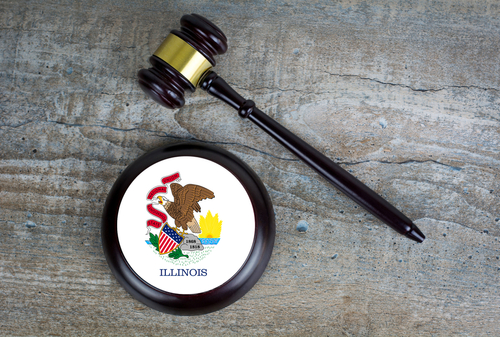Texas county experiments with allowing indigent clients to choose their own lawyers
BINDERS FULL OF LAWYERS
Another practical problem was the time required for making a choice. Originally, the plan was to give people being held in jail up to 36 hours to choose a lawyer, using a binder full of lawyer biographies. But the courts were concerned about keeping track of everyone’s decisions, and jailers were worried that the binder would become a weapon. In the end, incarcerated defendants got 15 to 30 minutes with the binder before they had to choose.
Of course, there was the problem Jones encountered: Defendants tended to choose the same lawyers over and over again if arrested multiple times.
It wasn’t just her, according to the Justice Management Institute, a nonprofit in Arlington, Virginia, that was brought on to gather data and report on the project. Three other lawyers also were disproportionately popular early on—and while assignments evened out over time, three to five lawyers continued to get about one-third of the cases.
The JMI’s 2017 report said it wasn’t clear why but said some lawyers interviewed thought the defendants were choosing counsel who’d had recent high-profile successes or responding to good word of mouth.
Colfax of the Texas Indigent Defense Commission notes that the busiest lawyers took themselves off the list when necessary, showing that the system worked as intended. Lefstein of Indiana University suggests that—also as intended—client choice might have improved the quality of representation.
“The lawyers who had been identified to me as very good lawyers, or with whom I had been very impressed, they were precisely the lawyers who got all the cases at the very beginning,” he says.
REINVENTING THE WHEEL
The Justice Management Institute report sought to quantify such impressions, using data generated during the first year of client choice. One of the most dramatic findings: Clients seemed to like choosing their own attorneys. Seventy-two percent elected to do that rather than have the court appoint the next lawyer on the wheel, which remained an option. That’s a success in itself, Lefstein says.
The JMI also found some indications that client choice improved case outcomes. Those who chose their own lawyers generally had their first meeting with that lawyer more quickly. Client choice cases were more likely to be resolved by a guilty plea to lesser charges (as opposed to pleading guilty to the original charges), and they were more likely than nonchoice cases to go to community supervision instead of jail.
Unfortunately, the study couldn’t reach firm conclusions in a lot of other areas, including whether client choice improved clients’ sense of fairness, case transparency and lawyer effort. Although the project was not expected to bring down costs—a perpetual problem in indigent defense—cost data was confounded by an expensive, high-profile felony case during the project year.
The JMI also surveyed clients, lawyers and judges about their impressions of representation under both systems. Most lawyers said they didn’t change their practices under client choice. But more often than defendants who used court-appointed counsel, “choice” clients reported feeling like the lawyer was concerned for them, worked hard for them and was honest. Most of Comal County’s judges also felt the quality of representation had improved. One noted that lawyers submitted more requests for funds to hire an investigator, suggesting they were being more thorough.
Jones, for her part, likes some aspects of the program. For example, if a private lawyer is working with someone who runs out of money, the courts are open to dismissing that lawyer and then appointing them again through the indigent defense system. “It kind of kept the dockets flowing because they weren’t starting over with a new court-appointed attorney,” she says.
On the other hand, there was that deluge of new clients. “I wouldn’t say [it’s a] flaw, but it’s definitely something that needs to be taken into consideration before it’s talked about in other markets,” Jones says.
Marea Beeman, director of research initiatives and defender legal services at the National Legal Aid & Defender Association, says her organization has no official policy on the idea of client choice. But she’s a supporter, as long as the system is subject to the same controls the association wants on all indigent defense, such as adequate resources and training.
“If [people] can pick their doctors on Medicare, Medicaid, that type of system, I don’t really see what is the difference,” she says.
Colfax and Lefstein haven’t heard from anyone who wants to try it elsewhere, but they’d be happy to help. Lefstein says more data might be crucial. “It’s going to take a couple of more examples before you’re going to convince lawyers in America that there is merit in this,” he says.
This article was published in the June 2018 issue of the ABA Journal with the title "Defendant’s Choice: Texas county experiments with allowing indigent clients to choose their own lawyers."



